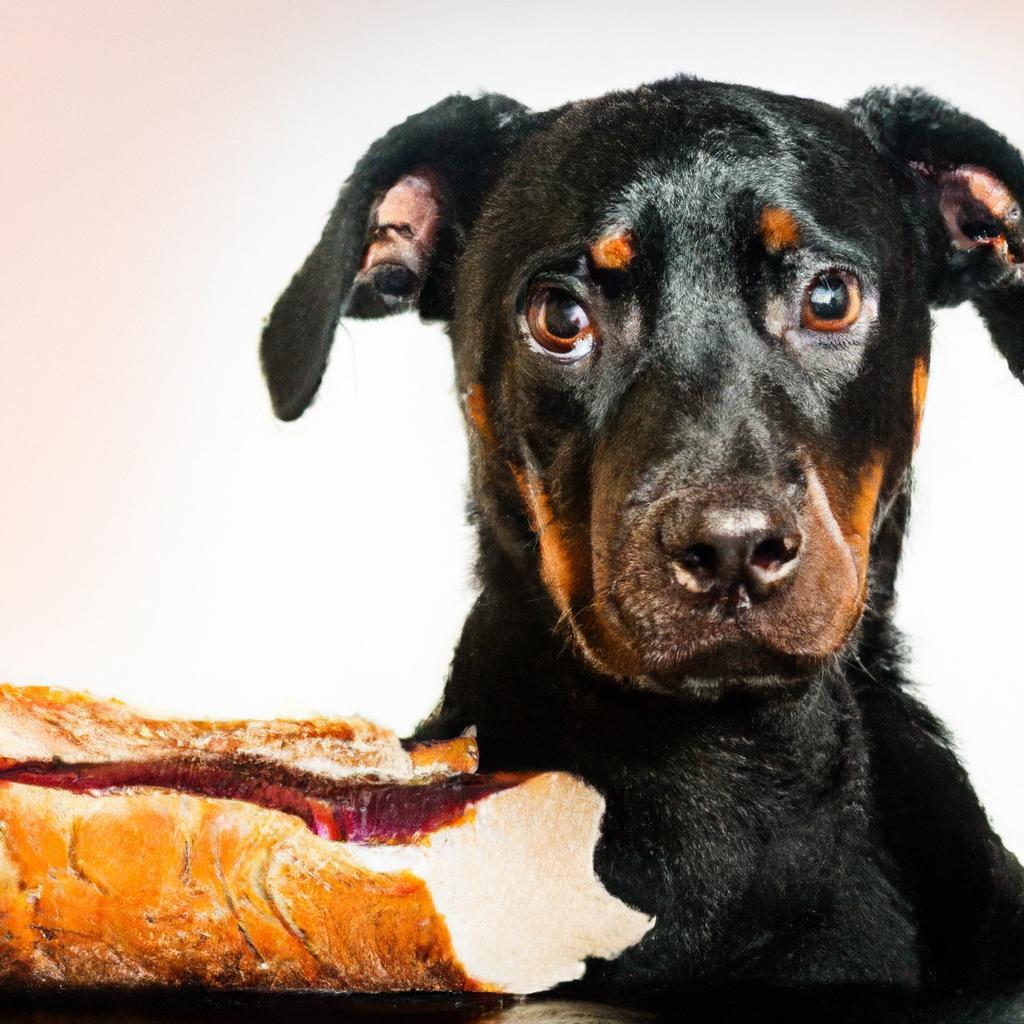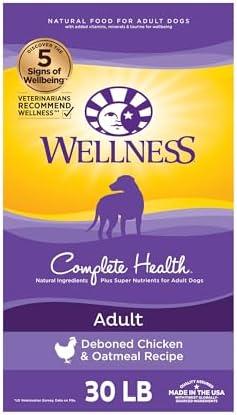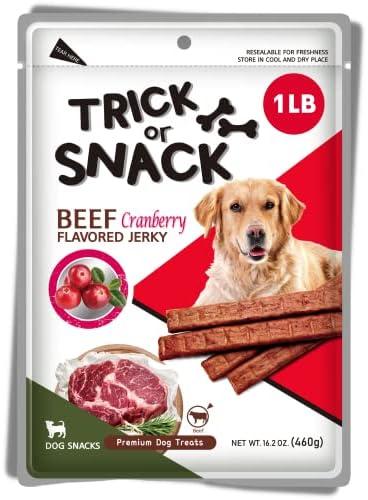Once, a loving dog owner named Sarah shared her fresh-baked bread with her golden retriever, Max. At first, he wagged his tail in delight, but soon after, he seemed lethargic and uncomfortable. Concerned, Sarah researched and discovered that while plain bread isn’t toxic, many ingredients can be harmful to dogs. She learned that bread can lead to obesity and digestive issues if fed in excess. Now, Sarah opts for dog-friendly treats, ensuring Max stays healthy and happy. Remember, a little knowledge can protect our furry friends!
Contents
- Understanding the Nutritional Impact of Bread on Canine Health
- Identifying Potential Risks and Allergens Associated with Bread for Dogs
- Evaluating Safe Bread Options and Serving Sizes for Your Pet
- Expert Recommendations for Incorporating Bread into a Balanced Dog Diet
- Q&A
Understanding the Nutritional Impact of Bread on Canine Health
When considering the dietary needs of our canine companions, it’s essential to evaluate the role of various foods, including bread. While bread is a staple in many human diets, its impact on dogs can vary significantly based on several factors. Understanding these nuances can help pet owners make informed decisions about incorporating bread into their dog’s meals.
Firstly, it’s important to recognize that not all types of bread are created equal. **Whole grain breads** can offer some nutritional benefits, such as fiber, which aids in digestion. However, many commercial breads contain additives, preservatives, and sugars that can be harmful to dogs. **White bread**, for instance, is often stripped of essential nutrients and can lead to weight gain if consumed in excess. Therefore, if you choose to share bread with your dog, opt for healthier, whole grain varieties and always check the ingredient list for any harmful components.
Moreover, portion control is crucial when introducing bread into your dog’s diet. Dogs have different caloric needs based on their size, age, and activity level. A small piece of bread as an occasional treat may not pose a risk, but frequent feeding can lead to obesity and other health issues. **Moderation** is key; consider bread as a supplement to their regular diet rather than a primary food source. Always monitor your dog’s reaction to new foods, as some may have sensitivities or allergies that could be exacerbated by certain ingredients found in bread.
Lastly, it’s vital to remember that bread should never replace a balanced diet specifically formulated for dogs. While it can be a fun and tasty addition, it lacks the essential nutrients that dogs require for optimal health. **Consulting with a veterinarian** can provide personalized guidance on your dog’s dietary needs and help you determine whether bread is a suitable treat. By prioritizing your dog’s health and well-being, you can make choices that enhance their quality of life while still enjoying the occasional indulgence together.
Identifying Potential Risks and Allergens Associated with Bread for Dogs
When considering whether to share a slice of bread with your furry friend, it’s crucial to be aware of the potential risks and allergens that may be present. While plain bread can be safe in moderation, various ingredients and additives can pose serious health threats to dogs. Understanding these risks can help you make informed decisions about your pet’s diet.
Many types of bread contain ingredients that can be harmful to dogs, such as:
- Garlic and Onion: Commonly found in flavored breads, these ingredients are toxic to dogs and can lead to gastrointestinal distress and more severe health issues.
- Raisins and Grapes: Some specialty breads may include these fruits, which are known to cause kidney failure in dogs, even in small amounts.
- Yeast: Bread that is still rising can be dangerous if ingested, as it can expand in the dog’s stomach, leading to painful bloating or even rupture.
Additionally, many dogs have specific dietary restrictions or allergies that can be exacerbated by certain types of bread. Common allergens include:
- Wheat: A frequent ingredient in bread, wheat can trigger allergic reactions in some dogs, resulting in skin irritations, digestive issues, or ear infections.
- Dairy: If the bread contains dairy products, dogs that are lactose intolerant may experience upset stomach or diarrhea.
- Preservatives and Additives: Many commercial breads contain preservatives that can be harmful to dogs, leading to long-term health problems.
It’s essential to monitor your dog for any adverse reactions after consuming bread. Symptoms such as vomiting, diarrhea, or signs of discomfort should prompt immediate consultation with a veterinarian. Always prioritize your dog’s health by opting for plain, whole-grain bread without any harmful additives, and consider alternatives that are specifically formulated for canine consumption. By being vigilant about the ingredients in bread, you can ensure that your beloved pet remains safe and healthy.
Evaluating Safe Bread Options and Serving Sizes for Your Pet
When considering bread as a treat for your furry friend, it’s essential to evaluate the types of bread that are safe for dogs. Not all bread is created equal, and some varieties can pose health risks. **Whole grain bread** is often a better choice than white bread, as it contains more nutrients and fiber. Additionally, **sourdough** can be a safe option in moderation, as it’s easier for dogs to digest due to the fermentation process. Always avoid bread that contains ingredients harmful to dogs, such as garlic, onions, or raisins.
Portion control is crucial when introducing bread into your dog’s diet. While a small piece of bread can be a delightful treat, too much can lead to weight gain and digestive issues. A good rule of thumb is to limit bread to **10% of your dog’s daily caloric intake**. For small dogs, this might mean a bite or two, while larger breeds can handle a slice or two. Always monitor your pet for any adverse reactions when trying new foods, including bread.
It’s also important to consider the **texture and type of bread** you offer. Soft, fluffy bread can be easier for dogs to chew and digest, while crusty or hard bread may pose a choking hazard, especially for smaller breeds. If you choose to give your dog bread, consider tearing it into smaller, manageable pieces to prevent any potential choking incidents. Additionally, avoid giving your dog bread that has been toasted, as the hard texture can be difficult for them to handle.
always consult with your veterinarian before making any significant changes to your pet’s diet. They can provide personalized advice based on your dog’s health, size, and dietary needs. Remember, while bread can be a fun and tasty treat, it should never replace a balanced diet specifically formulated for dogs. By being mindful of the type of bread and the serving sizes, you can safely include this occasional treat in your pet’s diet without compromising their health.
Expert Recommendations for Incorporating Bread into a Balanced Dog Diet
When considering the inclusion of bread in your dog’s diet, it’s essential to choose the right type and quantity. **Whole grain breads** are often the best option, as they provide more nutrients and fiber compared to white bread. Look for breads that contain minimal additives and preservatives, ensuring that the ingredients are natural and wholesome. Avoid breads with ingredients like garlic, onions, or excessive sugar, which can be harmful to dogs.
Portion control is crucial when introducing bread to your dog’s meals. **Moderation** is key; bread should only be an occasional treat rather than a staple in their diet. A small piece of bread can serve as a reward during training or as a special snack. Always monitor your dog’s reaction to new foods, and consult with your veterinarian if you have any concerns about their dietary needs.
Incorporating bread can also be a fun way to enhance your dog’s meals. Consider using bread as a base for **homemade dog treats**. You can create tasty snacks by adding dog-safe ingredients like peanut butter or pumpkin puree to the bread. This not only makes the treat more appealing but also ensures that your dog is getting additional nutrients alongside the carbohydrates from the bread.
Lastly, always keep an eye on your dog’s overall health and weight. If you notice any adverse reactions or changes in their behavior after introducing bread, it may be best to eliminate it from their diet. Regular check-ups with your veterinarian can help you tailor your dog’s diet to their specific needs, ensuring they remain healthy and happy while enjoying the occasional slice of bread.
Q&A
-
Is bread safe for dogs to eat?
In moderation, plain bread is generally safe for dogs. It can be a good treat, but it should not replace a balanced diet. Always ensure the bread does not contain harmful ingredients like raisins, garlic, or xylitol.
-
Can bread cause allergies in dogs?
Some dogs may have allergies or sensitivities to wheat or gluten. If you notice symptoms like itching, digestive upset, or unusual behavior after your dog eats bread, consult your veterinarian.
-
How much bread can I give my dog?
A small piece of bread as an occasional treat is usually fine. A good rule of thumb is to limit bread to no more than 10% of your dog’s daily caloric intake to avoid weight gain and nutritional imbalances.
-
What types of bread should I avoid giving my dog?
Avoid giving your dog bread that contains nuts, seeds, or any added ingredients that may be toxic to dogs. Additionally, bread with high sugar content or preservatives should be avoided for a healthier option.
while bread isn’t inherently harmful to dogs, moderation is key. Always prioritize your pet’s health by choosing safe, dog-friendly options. Consult your veterinarian for tailored advice, ensuring your furry friend thrives on a balanced diet.

大家好,我是彼得潘,專業的手法身體治療師。我喜歡探索和研究各種主題,並透過與人工智慧的合作分享專業、實用、有趣的文章。我們定期進行人工審核,以確保內容的準確性。如果您發現文章中有任何不準確的地方,請隨時與我們聯繫,我們會及時糾正。您可以透過 [email protected] 與我們聯繫。



